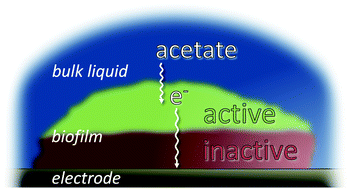
They found, however, that long-range electron transfer was not restricted by electrical resistance through the biofilm.
The results could help researchers optimise the conditions needed for maximum microbial fuel cell performance.
Read this HOT Energy & Environmental Science article today:
Metabolic spatial variability in electrode-respiring Geobacter sulfurreducens biofilms
R. S. Renslow, J. T. Babauta, A. C. Dohnalkova, M. I. Boyanov, K. M. Kemner, P. D. Majors, J. K. Fredrickson and H. Beyenal
DOI: 10.1039/C3EE40203G










